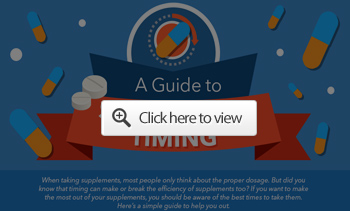A 2021 survey indicates that 80% of Americans use supplements, a dramatic increase from the 52% reported in a 2012 JAMA report, a statistic that has held steady since 1999. While multivitamin use had declined by that time slightly, from 37 to 31 percent, the new survey indicates that 75 percent of supplement users now use multivitamins. The use of vitamin D and omega-3 supplements has also continued to increase over the years.
In 2012, vitamin D use increased from just over 5% to 19%, and fish oil supplementation increased from just over 1% to 12%. However, in 2021, a whopping 52% of Americans were taking vitamin D, and zinc and vitamin C were also popular, at 22% and 40%, respectively.
Some of the other popular supplements are probiotics, omega-3s, multivitamins, vitamin C, turmeric, calcium, and magnesium. In total, Americans spent an estimated $21 billion on nutritional supplements in 2015. By 2019, that figure had doubled to $42.6 billion.
While Dietary supplements are generally safe, when and how you take them, such as with or without food, or before or after exercise, can make a difference in terms of both safety and effectiveness. Certain supplements may also be contraindicated for certain health conditions or if you are taking a particular medication. Below is some helpful guidance on the use of common supplements.
Quick guide to timing of supplements
About the timing of vitamins and minerals
Since multivitamins contain a variety of water- and fat-soluble vitamins, and in some cases also minerals, it is generally recommended to take half the daily dose in the morning with breakfast and the other half with the main meal ( Dinner). for most people, or lunch if you’re intermittent fasting). While you may not notice any adverse effects if you take it on an empty stomach, taking your multivitamins with food is a safer bet overall.7
Both B vitamins and non-liposomal vitamin C can cause stomach upset and nausea when taken on an empty stomach, for example, and fat-soluble vitamins won’t do you any good unless you take them with a small amount of fat, like an egg or half an avocado. However, avoid going overboard on fat, as too much fat can interfere with the absorption of water-based vitamins.
When taking individual vitamins and minerals, you may need to pay attention not only to when you take them, but also to their combination with other supplements you’re taking and their ideal ratios. For example:
• fat-soluble vitamin K2 it is best taken with the largest meal containing fat. This could be during the day or at dinner. Calcium can be taken during the day, but magnesium is best taken at night, without food.
Unfortunately, the ideal ratio of vitamin K2 to D has yet to be determined, so there are no hard and fast rules here. Some experts suggest that 200 micrograms of vitamin K2 per day will meet the needs of the “average” healthy person, but if you’re taking a high dose of vitamin D, you’ll need slightly more.
Although K2 is not toxic, people taking vitamin K antagonists, drugs that reduce blood clotting by reducing the action of vitamin K, are advised to avoid vitamin K2 supplements (MK -7).
• Zincon the other hand, it should not be taken with a calcium and/or iron supplement, as these can make it harder for your body to absorb zinc.
Similarly, avoid taking calcium or vitamin E with iron, as these nutrients interfere with iron absorption. It’s also best to take iron on an empty stomach, either mid-morning or mid-afternoon.
• Magnesium, which is one of the most important minerals to supplement as most of us are deficient, it helps your body relax, is best taken at night and can be taken with or without food. If you are also taking calcium, take these two together.
If you exercise regularly, consider taking your calcium and magnesium in a ratio of one part calcium to two parts magnesium with your pre-workout meal. While the ideal ratio of magnesium to calcium is thought to be 1 to 1, most people get much more calcium than magnesium from their diet; therefore, your need for magnesium supplementation may be two to three times greater than that for calcium.
• oral B12, which tends to be poorly absorbed no matter what, is best taken on an empty stomach to optimize absorption. This is less of a problem if you are using a sublingual form of B12. Vitamin B12 can interact with a variety of medications, including those used for bone loss, cancer, gout, high blood pressure, and acid indigestion, such as H2 blockers and proton pump inhibitors, as well to check for contraindications before you start taking it regularly.
Time for fat and fiber supplements
Fiber can inhibit the absorption of fat in your body, so it’s best to take most fiber supplements, including “green” supplements like spirulina powder and seaweed, separately from any fatty acid supplements that you may be taking. If you are exercising, remember that fiber supplements will slow the movement of food through the stomach and intestines.
For this reason, it’s best to take fiber at least three to four hours before exercise or competition. Alternatively, take it towards the end of the day. An excellent fiber supplement, whole husk psyllium is ideally taken two hours after a meal with a full glass of water.
As for omega-3 supplements like fish or krill oil, these could cause indigestion if taken immediately before exercise, so consider taking them with breakfast, along with any multivitamins you’re taking. Also note that krill oil supplements are contraindicated for those with shellfish allergies, and fish or krill oil should not be taken if you have a blood-clotting disorder or are taking blood-thinning medications.
Time for enzymes and probiotics
Enzymes such as bromelain, papain, trypsin, and others are used not only as a digestive aid, but also to improve muscle recovery and decrease inflammation. Depending on your objective, you will have to modify the time. When taken with a meal, they will improve your digestion. For muscle enhancing and/or anti-inflammatory effects, you’ll want to take them on an empty stomach after your workout, either in the morning or afternoon.
Probiotics help improve your gut microbiome by supplying beneficial bacteria. It is best to take them on an empty stomach, two to three hours before the first meal or after the last meal of the day. Also remember that to reap the benefits of a probiotic supplement, you need to reduce your intake of processed foods and sugar. Otherwise, you’re basically just throwing your money away.
About the timing of antioxidants
As a general rule, antioxidant supplements such as resveratrol, astaxanthin, vitamin E, and ubiquinol (the reduced version of coenzyme Q10) are fat-soluble and are best taken with a fatty meal. Ubiquinol is best taken in divided doses with a high-fat meal, while vitamin E and astaxanthin can be taken once daily with a high-fat meal to increase absorption. Supplements containing resveratrol can be taken on an empty stomach.
If you’re an athlete or exercise regularly, several studies have shown that taking antioxidant supplements immediately before exercise has the curious effect of decreasing insulin sensitivity. It also hinders your body’s ability to defend itself against oxidative damage. As nutritionist and fitness trainer Ben Greenfield noted:12
“By shutting down the body’s need for natural antioxidant activity that helps adapt to stress and respond to exercise, high-dose antioxidant consumption of a single isolated antioxidant (such as vitamin C or vitamin E) could potentially mitigate the benefit of training.
For this reason, antioxidant drinks and capsules should be A) full-spectrum…and B) consumed only in moderation, and not as a consistent part of your pre-workout or intra-workout nutrition protocol. Takeaway message: Take antioxidants with a pre-race meal and only before very hard workouts. Otherwise, limit antioxidants to a low to moderate intake only, and try to consume as much as possible during an exercise session.”
Do you really need all the supplements you’re taking?
As a general rule, the better and healthier your diet, the fewer supplements you will need. Eating real food, ideally grown organically to avoid pesticide exposure, is really the best way to ensure you’re getting all the nutrients your body needs.
Vegetarians and vegans, who may think they are eating the best diet possible, may be among the few who really need to pay close attention to their nutritional needs, as many important nutrients are only found in foods of animal origin.
The animal-based omega-3 fats DHA and EPA are just one example. Vitamin B12 is another very important one that vegans forgo, which can wreak havoc on your health. Over time, chronic vitamin B12 deficiency can lead to serious and irreversible conditions, including depression, dementia, neurological and neuropsychiatric conditions, fertility problems, heart disease, and cancer—all things a vegan diet is thought to prevent.
That said, dietary supplements can be quite beneficial if you know or suspect you might have a particular deficiency and/or if you’re trying to address a particular health issue. Just keep in mind that the more supplements you take, the more difficult it becomes to get it right. Are you taking each at the most appropriate time and in the right combination, and in the right proportion, with other nutrients?
Eating a whole food diet avoids most of these problems, since your body knows exactly what to do with the nutrients it gets from food, regardless of time or combination (although an argument can also be made for food combinations and foods). ideal times for meals). If you’re taking a lot of supplements but still eat mostly processed foods, make this the year you start making changes.
That said, to make sure you get the most out of the supplements you take, make a list and check the best timing and combination of each. While I’ve given you some examples above, you’ll find more examples in the infographics provided at the beginning of this article and below.
.


